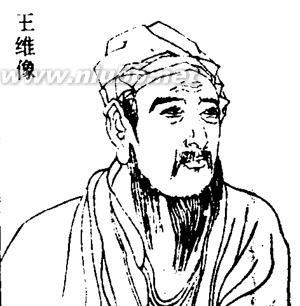A Brief Discussion of Feminist Leadership
In a sense, after entering 1990s, feminist leadership and feminine management or soft management is gradually being formed. The appearance of the soft management style is
substantially the prelude of organization management style’s transformation. In this sense, the study of feminist leadership and feminine management is a new exploration of enterprise management creation. This article will review the development process of feminist leadership theory and think about the meaning of studying it, which will help us to understand more about the meaning of soft management for organization transformation.
As mentioned above, women’s leadership project is almost a significant aspect of organization management. Helgesen, an American female career consultant, in 1990, proposed the theory of feminist leadership style in the book,“female advantages”,which means feminist leadership style and feminist leadership study are increasingly attracting attention of international management. However, at the same time, they also result in some controversy, for example, whether there are differences in leadership style between male and female, whether the factors affecting the
behavior of male and female are same or how different, whether there are female advantages, etc. This article will discuss feminist leadership style later.
Leadership style of female leaders is based on the characteristics of them. Merry
Wiesner-Hank, a professor in University of Wisconsin at Madison, emphasized the importance of studying male characteristics and female characteristics in leadership. She pointed out that male managements and marketing personnel are praised because of their competition and team spirit, and they are considered as the brain of organizations, but women managers are the heart of company culture, specializing in interpersonal relations. The characteristics of female are necessary to be discussed.
І. The Development of Feminist Leadership and the Meaning of It
Starting from the second half of the 20th century, western countries women are playing an increasing influence on social life. Women in many capitalist countries served as the national leaders or large enterprise’s supreme leader. The female managers worldwide performance is quite remarkable. From the late 1970s to the early 1980s, with the increasing development of economy and management, the study of women leaders became a part of the management research. From the development of feminist leadership, it has two stages: the first is before 1990s, studies are focus on the behaviors of female leaders;[1] the second is after 1990s, with the promotion of knowledge economy, the new tendency of organization and organization management is increasingly obvious, and there is a tendency of feminine orientation or soft management in some organization and management fields, which suggested the leadership style and method of female leaders play a non-substitutable role in the development. As Professor Tack,
in Eastern Michigan University, and Professor Patitu, in State University of New York (1997) said,“The management skills of women is to soften the traditional management of sharp edges.”[2]
In fact, because of social history, social economic organizations have been showed obvious masculine characteristics. However, in the 1990s, under the creation of knowledge economy, organization leadership style changed gender orientation, which is mainly because soft
management style represented by female sexual orientation is more suitable for organizations’ development during the organization transformation. During the research of English retail enterprises, Senior Lecturer Lane, in University of Warwick (2005), found that with the
development of Customer Relationship Management, retail enterprises’ implementation strategy management has transformed from traditional outcome-based control, executed by sales manager to monitor, control, evaluate and reward salespeople, to behavior-based control, based on building a stronger relationship between sales personnel and organization’s managers. During the
transformation, female sales managers perform obviously better than their male counterparts. On the one hand, behavior management concentrateson more process than result. Because female sales managers have soft skills in the aspect of sensitivity, input range and interpersonal relationship, they make organizations have more humanized management mode (Comer and Drollinger, 1997; Jolson et al., 1997; Comer Nicholls and Vermillion, 1998). On the other hand, for employees of an organization, female managers’ soft behavior mechanism decreases the
benefit risk because of uncertainty of behavior influences. Lane’s research is focus on junior sales managers, rather than individual high managers, so her research has certain representativeness.
II. Leadership Style of Feminist Leaders
There are a large number of different views about leadership style of feminist leaders during the development of the theory.
In overview, female leadership style can be roughly divided into three different kinds of research points and basic points: the first is focus on female personality traits; the second emphasized on common characteristics or particularity affecting the development of female behaviors; the third concentrate on analysis of attributes.
Some people have stereotypes of women, thinking that women are emotional and vacillating, so women are not suitable in leadership positions. However, with the social change, the enterprises began to emphasize interpersonal relationship, team work and elasticity and women are congenitally attentive, warm and caring, so it is a good time for women to be leaders.[3] A
research done by IMF shows: male managers tend to have transaction leadership, which means if subordinates do something wrong, male managers will punish them; if they do something good, male managers will encourage them, but female managers tend to have transformation leadership, which means female managers make subordinates know company’s strategic plans, encourage subordinates to participate in decision-making, share information, respect subordinates’ self-value, promote subordinates to work and tend to use authority about personal characteristics, such as charisma, communication skills and diligent working attitude. However, the empirical research done by Driskell, Olmstead and Salas (1993) showed that people tend to think in the work group, women have less influence than men.[4]
Recently, some studies find that female likes to have more democratic and participative style and tend to transformation leadership mode to encourage subordinates to put the interests of themselves into the organization’s goals (Eagly, Karau,&Johnson, 1992; Rosener, 1990; Eagly& Johnson, 1990; Helgesen, 1990; Grant, 1998) .
However, some research reports and scholars studies show there are no leadership style
differences between the sexes. The study by Stephen Brown (1979), researcher in Tennessee State University points out that managers with practical experience believe that there are no differences between men and women in the leadership style and there is no need to study men and women separately.
Actually, we think, minimizing the differences between male and female leadership style echoes the reality that many female managers deny or try to dilute their gender characteristics. When asked whether gender is a problem being a female leaders, Aiping Yin(尹爱萍), Chairman of the board of Zhengzhou Jianghai Group said, “Firstly, forget you are a woman”. This is doing gender, treating male and female equally, what female leaders should do in life and jobs. Female have to forget their gender in work to obey the game rules, as well as show their female traits , like communication skills.[5]
We can learn from the factor that female leaders deliberately ignore their gender, which is there are differences between male and female leaders in fact. Why the differences are ignores? The first reason is that in male-dominated work, female leaders’ tendency to be more democratic decreases, which is the result of female leaders’ adaptability to organizational rules (Robbins, 2004). [6]Another reason is that because of society and history, most organizations are
male-dominated, which means this type of organization is characterized by power, control competition and grades.
In fact, as a new research content, feminist leadership style has not had a clear concept by now. Ian Cook (2002) points out six roles in modern leadership: Mentor, a high level of director-general, stimulate or coach, servant, role model and change leader, which has been widely accepted. The core of the six roles is cooperation. Jean Lau Chin’s research conclusion also shows that feminist leadership style means cooperation, [7] which is opposed to male-dominated leadership style.
[8]In conclusion, to study feminist leadership style, leadership traits, leadership situation and leadership effectiveness should be linked together, which might be the new direction of feminist leadership theory research.
Ш. Characteristics of Feminist Leaders

As mentioned above, female leaders’ characteristics are the base of feminist leadership style.
China’s Taiwan scholars Lirong Huang (黄丽蓉,1996) divide characteristics of female leaders into five aspects:
1. Interactive Leadership Style
Female are good at transforming their interests to organization’s goals, as well as encouraging others. These female managers all try their best to create a suitable working environment and
organizational culture in order to achieve a win-win situation, which means female managers hope all operations of the organization are beneficial to organization and staff. This is interactive leadership.
2. Closed Organizational Relationship, like a spider web
Gilligan (1982) thinks, female leaders tend to emphasize the connection between them and others, as well as their responsibility for others. When female leaders have to decide about morale problems, they will think more about the result brought to the relevant people. Helgesen describe feminist leadership is to spread from the center of the organization, just like a spider web, in order to form an interconnected team, together with the center leader.
3. Holistic Thinking
Female managers compared with male managers, tend to have “whole person” communication. They want to not only learn about the work performance of subordinates, but also make deep
conversations with subordinates, caring about subordinates’ ambition, ideal, family, sentiment, etc. Since the relationship between employees and organizations cannot cut off all other factors, only leaving the work and private problems will definitely affect mood and performance at work, holistic thinking is more appropriate to think about employees and find out suitable interaction, which is healthier and more completely practical.
4. Empowerment and Team Building
Aburdene and Naisbitt (1992) think, the word most appropriate to describe female leaders is likely to be empowerment. In general, female are more careful with interpersonal communication with good listening and communication potential. [10] Many researches show female are
superexcellent teammates. In recent, some industries having a lot of female managers, like advertising industry, information industry and hotel industry, exactly are industries where teamwork is especially necessary. This fact is more convincing because of the management practice.
5. Attach Importance to Nurturing Approach
In most human culture, nurturing the next generation is responsible for women, mostly. During the process of pregnancy, giving birth and raising children, female are cultivated of a stronger sense of mission, which is also taken into organizations when women gradually participate in public sector from private sector.
With the change of social structure under the new economy, more and more female become leaders. This change puts forward to new requirements to organizational management. In the practice of the organization, feminist leadership style, represented by female leaders is
increasingly popular according with the need of present organizational management.
Feminist leadership essentially introduce gender dimension into the study of leadership behaviors. However, with the deepening of the research, feminist leadership research has
gradually beyond gender boundaries and is likely to represent the development direction of future organizational leadership style. Therefore, the research on feminist leadership is not only an
introduction of feminine management style’s problems, but also a transformation of organizational management method even organizational culture.
Reference
[1]梁巧转 , 忻依娅 , 任红军 . 两性领导风格理论研究评述 [J] . 妇女研究论丛, 2004 , (5) :
53- 58.
[2] MarthaWingard Tack and Carol Logan Patitu. Has managementgone soft? Yes and it works!
[J] .Women in Business, May/Jun1997, 49 (1) : 32- 38.
[3] Lynn R. Offermann and Pamela E. Schrier. Social influencestrategies: The impact of sex,
role and attitudes toward power [J] .Personalityand Social PsychologyBulletin, 1985, 11
(3) :286-300.
[4] James E. Driskell, Beckett Olmstead and Eduardo Salas. TaskCues, Dominance Cues and
Influence in Task Groups [J] . Journalof Applied Psychology, 1993, 78 (1) : 51- 60.
[5] CarmenLuke.Glocalmobilities: crafting identities in interracialfamilies [J] . International
Journal of Cultural Studies, 2003, 6(4) : 379- 401
[6] Stephen P Robbins. Essentials of Organizational Behavior (8thEdition) [M] .Prentice Hall,
Jun 15, 2004.
[7] Jean Lau Chin. Feminist leadership: Feminist visions and diversevoices [J] .Psychology of
Women Quarterly, 2004, 28 (1) : 1- 8
[8] Janice F. Madden. The Changing Spatial Concentration of Incomeand Poverty
amongSuburbs of Large U.S. Metropolitan Areas [J] .Urban Studies, March 2003, 40 (3) : 481- 503
[9] 黄丽蓉组织中的女性领导 [D] . 中国台湾: 国立政治大学教育研究所硕士论文, 1996
[10] Patricia Aburdene and John Naisbitt. Megatrends for Women:FromLiberation to
Leadership[M] .NewYork: Fawcett Columbine,1992.
百度搜索“爱华网”,专业资料,生活学习,尽在爱华网
 爱华网
爱华网



